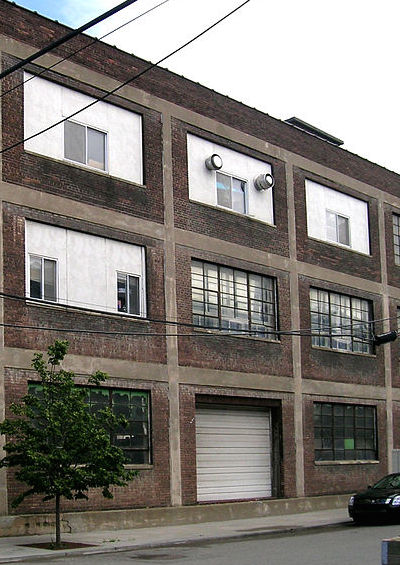A New Era of U.S. Small Manufacturing Dawning?
The man who coined the term “emerging markets” now foresees a great future for “rustbelt” cities.
May 4, 2016

Donald Trump, the likely Republican nominee for the 2016 U.S. presidential election, says, “We are in an economic disaster. And it can get worse. Much worse.”
More thoughtful people, such as Edward Luce, columnist for The Financial Times, engaged in similar pessimism, when he penned his latest book, Time to Start Thinking: America in the Age of Descent.
Western Europe may appear to be just as grim, with persistent low levels of economic growth, high unemployment and the rise of radical political parties, mostly on the right, in some cases also on the left, in quite a number of countries.
Needed: A turnaround
But not all is lost – far from it. About 18 months ago, I had a chat with an old friend, Antoine van Agtmael, who told me that he was deep into researching the revival of America’s “rustbelts” – those once great blue-collar manufacturing cities who had fallen on hard times.
Cities like Pittsburgh, Detroit and Akron lost tens of thousands of jobs as entire industries moved abroad to take advantage of cheap labor and low overall production costs.
I first met Antoine in the early 1980s when I joined the World Bank and heard of his work on private sector investment at the Bank’s affiliate, the International Finance Corporation (IFC).
Antoine subsequently gained global notoriety because he was the first to come up with the term “emerging markets.” He then left the IFC to establish a successful emerging markets investment firm.
At a minimum, his looking at American “rustbelts” is significant as he has a proven track record of seeing economic opportunities in many parts of the world where prospects seemed far from encouraging.
Examining the rustbelt
In recent years, Antoine met some of the most successful chief executives of emerging market companies, including those that to the outrage of Trump have benefited from the “offshoring” of U.S. production.
Some of these executives said they were increasingly worried about new competition from the U.S. and also from Western Europe.
Antoine, who came to live in the U.S. from Holland, chatted with Fredy Bakker, the former top editor of Holland’s financial newspaper, Het Financieele Dagblad, who had been hearing similar stories on his own international travels.
Their “eureka” moment came when on joint visits to Akron, Ohio, and Albany, New York, as well as to Eindhoven in the Netherlands and Dresden in Germany.
They came to the realization that the winners in global business will increasingly be those manufacturers who can produce smart, not cheap.
For the turnaround to happen, we don’t need the massive trade walls that Trump wants to erect to keep out Chinese goods.
New approaches
Rather, we need to understand that right now there are new industries rising and whole new approaches to manufacturing being established in the U.S. and in Western Europe that could well serve as leading models for far-reaching economic revival based on smart production.
Van Agtmael and Bakker have just published a book which, if widely read and debated could – and should – play a key role in changing the protectionist and depressing economic discourse that pervades the 2016 U.S. election debates.
Their new book The Smartest Places on Earth: Why Rustbelts Are the Emerging Hotspots of Global Innovation offers an upbeat scenario.
In the eyes of the authors, the era of low-cost advantage is drawing to a close. They found people in the United States and Europe whom they call “connectors” – people who excel in creating extraordinary consortia.
They are bringing together thousands of university researchers with governments (at the state and federal level), major corporations, entrepreneurs and venture capitalists.
The result is the establishment of “brain-sharing” centers that are highly innovative as they find ways to combine robotics, the Internet and 3-D printing to launch new products and entire new industries.
In Europe, under the leadership of some visionary “connectors,” four leading such centers – Eindhoven in Holland, Leuven in Belgium, Grenoble in France and Villach in Austria – have joined forces with the German State of Saxony and its “brainbelt” based in and around Dresden, to found an organization called Silicon Europe.
Approaches that bring businesses and universities together are now evolving fast in old manufacturing cities that have long had high unemployment, in both the United States and in continental Europe.
Batesville meet GE
In the United States, for example, the authors note that General Electric located a new plant to make the next generation of aircraft engines in Batesville, Mississippi, right next door to the Mississippi State University.
Its researchers have outstanding knowledge of new materials of the kind needed for GE’s future superlight, ultra-quiet, extremely fuel efficient aircraft engines.
The new factories are smart, clean, flexible, operated by processes that integrate electronics and mechanics with teams of people that combine both highly skilled individuals, some with PhDs, and some former line workers. They combine sharing brainpower and smart manufacturing.
Van Agtmael sees the United States having a great advantage in the new era where smart wins over cheap in part because of the huge research funding to universities and business that comes from the U.S. Department of Defense, NASA and the National Institutes of Health.
Another reason is the depth and breadth of U.S. capital markets, which have a long history of encouraging venture capital and providing risk finance for new start-up companies.
Global learning
However, the U.S. educational system may be falling short when it comes to training people with the skills to be most productive in the era of smart manufacturing.
Van Agtmael stresses that a much greater emphasis on community colleges that could provide the right kinds of skills training could be vital.
Moreover, the U.S. should learn from the German example, which has a highly developed vocational training model based on a dual-track work-study education system.
In sum, from the U.S. perspective, the irrepressible pessimists, whether called Trump or otherwise, should take note. As the authors of this new book conclude:
American manufacturing is being reengineered. New products and technologies are being developed at an increasingly rapid pace. Everyday products like clothes and shoes can be made smartly and again competitively in the United States. The business transformation is taking place at a time when many aspects of our daily lives, from transportation to healthcare to entertainment, is being changed quite dramatically and such changes are both the result of the sharing of brainpower and the stimulus for more such activity.
Takeaways
The era of low-cost advantage is drawing to a close.
“Brain-sharing” centers combine robotics, the Internet and 3-D printing to launch whole new industries.
US has an advantage in the new era where smart wins over cheap because of the huge research funding to universities.
Everyday products like clothes and shoes can be made smartly and again competitively in US.
